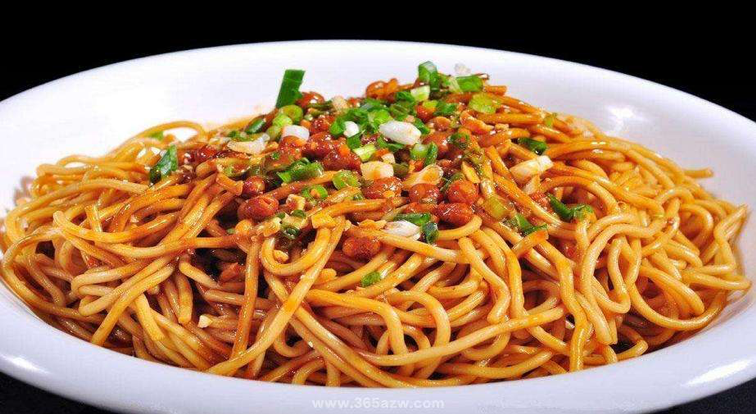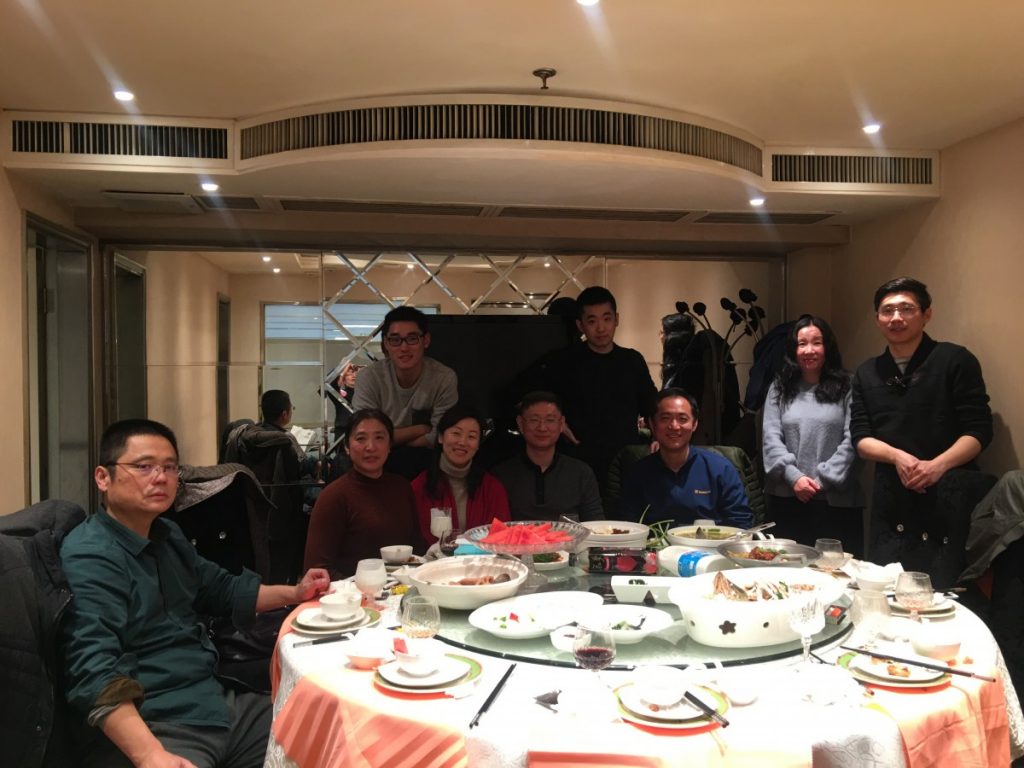A dish that is important to me and represents my family and cultural background is hot and dry noodles. I grew up in Wuhan, a city in China that is famous for its unique and various kinds of breakfast meals. One of the most popular breakfast meals in Wuhan is hot and dry noodles. Almost every breakfast restaurant in Wuhan sells hot and dry noodles during breakfast time, and it is very common to see people who are on their way to work to hold a bowl of hot and dry noodles that they just bought in their hands, and eat while walking to work.
I like this dish mainly because of its taste and the way it makes me feel when I eat it. The main ingredients of hot and dry noodles are boiled noodles and sesame paste. The delicious taste of the sesame paste is a main reason why I like the dish. When I was in middle school in Wuhan, there was a hot and dry noodles restaurant next to my school. Since it was considered a breakfast meal, and its ingredients were not very expensive, hot and dry noodles was sold very cheap. Although its price has increased throughout the years, at the time when I was a middle school student, it was only sold for three Chinese yuan, which was about forty US cents. I had limited allowance at the time, but I was really interested in video games. Therefore, I would often eat hot and dry noodles for breakfast, lunch and dinner in order to save money to buy video games. Since I liked the taste of hot and dry noodles, it did not bother me too much to eat it every day. Now that I have lived in various other places in the world, I still miss the hot and dry noodles sold in Wuhan. Although many other places also have hot and noodles restaurants, and many of the restaurant owners are from Wuhan, I still think that the hot and dry noodles they make taste very different from the hot and noodles in Wuhan. However, I would still look for hot and dry noodles restaurants whenever I move to a new city. When I eat hot and dry noodles now, it would often remind me of my hometown, as well as my childhood in Wuhan.
According to my research, hot and dry noodles originated in Wuhan during the 1930s. Summer in Wuhan is very hot and spans a long time. Therefore, since a long time ago, people would add alkali to noodles to prevent deterioration. This is the predecessor of hot and dry noodles. Hot-dry noodles originated from Cai Mingwei, who sold soup noodles on Changdi Street in Hankou in the early 1930s. His soup noodles are very popular, and guests would often wait in lines for a long time to buy them. Cai Mingwei was very clever at doing business. In order to speed up the shipment, he found an efficient set of noodle making procedures through repeated experiments. In order to serve customers faster, before selling the noodles, he would first cook the noodles shortly, and then quickly cool them and evenly spread oil on them, so that when selling noodles, the cooking procedures would be much faster. Cai Mingwei once saw a sesame oil workshop in Changdi Street. He saw that after the workers extracted sesame oil from sesame seeds, the sesame sauce, which had a very attractive fragrance, was left aside and thrown away. He immediately thought of the idea to add sesame sauce into the noodles. Therefore, Cai Mingwei bought some sesame sauce from the owner of the sesame oil workshop and went home. After repeated trials to add sesame sauce to his noodles, he was finally satisfied with his noodles and everyone around him who tasted the noodles also said it was delicious. Only then did he feel confident enough to launch his new products and go out to the streets to sell them. At this time, Cai Mingwei gave this noodle the name “Sesame Paste Noodles.” Later, in 1950, the industrial and commercial registration of the product was officially changed to “hot and dry noodles”. Cai Mingwei also established the brand “Cai Lin Ji Hot and Dry Noodles.” Now that hot and dry noodles had increased in popularity all around China, the instant hot and dry noodles brand “Big Hankou” is also gaining popularity. The brand can be found in supermarkets in almost every large city in China, and can even be seen in supermarkets in other countries such as the United States, Canada and Australia. Even though the instant noodles tried to simulate the taste of authentic hot and dry noodles by using sesame paste and soy sauce, in my opinion, it still tastes very different from the authentic hot and dry noodles, probably because the procedures to produce instant noodles are very different from the procedures to make authentic hot and dry noodles.

Source: http://www.365azw.com/share/s-302103.html

Recipe:
Recipe Source: https://www.chinasichuanfood.com/hot-and-dry-noodles-wuhan-noodles/
Ingredients
200 g alkaline noodles , light yellow ones (either dried or fresh ones)
2 tbsp. sesame oil
Garlic water
2 garlic cloves
2 tbsp. warm water
Sesame paste
2 tbsp. sesame paste
1 tbsp. sesame oil
1 tbsp. light soy sauce
1 tbsp. dark soy sauce
4 tbsp. warm water
1/8 tsp. Chinese five spice powder
small pinch of salt
Serve with
pickled radish
green onion
sugar
vinegar optional
Chinese Chili oil I use my homemade version
Instructions
- Cook the dried noodles for 4-5 minutes or fresh ones for 3-4 minutes. Transfer out and drain.
- Place the noodles to a clean operating board, add sesame oil and combine well. This process can cool down the noodles quickly and creating a chewy texture. Set aside to cool down completely.
Tune sesame paste
- In a large bowl, first mix 2 tablespoons of sesame paste with 1 tablespoon of sesame oil. Stir until well combined. And then add light soy sauce and dark soy sauce, continue stirring in one direction until well combined. Add around 4-5 tablespoons of warm water by three batches. Each time after adding water, stir in one direction until all the ingredients are well incorporated.
- Add Chinese five spice and a small pinch of salt based on personal taste. Combine well.
Other serving ingredients
- Mince green onion and chop the pickled radishes. You can also add smashed peanuts, pickled green beans or other toppings.
Garlic water
- Smashed 2 garlic cloves and then soak with warm water.
Assemble the noodles
- Bring water to boil in a large pot, and re-cook the noodles for around 10 -15 seconds until hot. Shake off extra water and transfer to serving bowl.
- Add around 2 tablespoons of tuned sesame paste mixture, 1/4 teaspoon vinegar (optional), 1 teaspoon garlic water, 1/8 teaspoon sugar and 2 teaspoons of chili oil. Top with green onion and pickled radish.
- Combine well before enjoying.

Hi, Ryan, thanks for bringing to our attention your favorite dish, hot and dry noodles! Although I have heard of this type of noodle before, I didn’t know that in Wuhan, some people would eat a bowl of noodle while walking to their office in the morning. That sounds incredible! It’s interesting how the delicious and cheap dish has allowed you to save some money for your other hobbies in life. I’m glad the hot and dry noodles have played such an important role in your life, and will surely continue to be quite significant for you in the future. I would encourage you to be more explicit and detailed about the ways in which the dish has influenced you as a person, for instance, how has your self-conception evolved over the years through your experience of the hot and dry noodle? Good job on the research of the history of the noodle. And thanks for sharing your family photo with us!